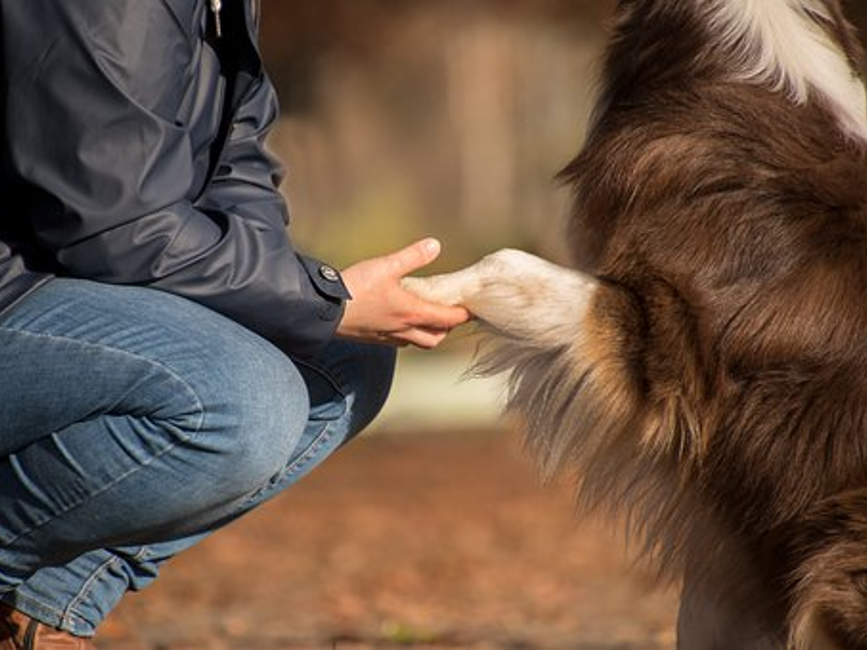Adopting a Pet

His pudgy nose, tiny paws and sloppy, wet kisses melted your heart in an instant. But after giving in to desire and surprising the family with a new furry friend, you found that caring for a new puppy was not exactly what you expected. Adopting a pet can be rewarding, but certain steps must be made before both you and your pet can be ready for the transition.
“It’s important to avoid impulse adopting,” emphasizes Dr. Snowden, an associate professor at the Texas A&M College of Veterinary Medicine & Biomedical Sciences. “Pets are a life-long commitment. Dogs and cats can live ten to fifteen years, while parrots and turtles will live much longer.”
So, how do you know if you are ready to adopt a pet? Snowden believes the first step of the process is to evaluate your needs and lifestyle.
“Before adopting a pet, a potential owner needs to consider the amount of space in the home available to accommodate the pet,” says Snowden. “Evaluating the amount of time and care that can be spent with the animal, as well as the activity level of both owner and pet, is important, too. Fish are not as demanding as a dog that needs jogging everyday and therefore may be a more suitable choice for a relatively inactive or time-pressed individual.”
Once you have decided which type of pet to adopt, it is time to choose where to search for your affectionate friend.
“Some great places to find a dog or cat are the local shelters, or breeders,” notes Snowden. “There are fewer sources for reptiles and birds, however many can be found at local breeders or rescue groups, as well as at local pet stores.”
But just finding the number for the local shelter in the yellow pages is not enough. When searching for a new pet, you must research and ask questions.
“When looking for a new dog or cat, it’s important to find out how much socialization the animal has been exposed to. The more social interaction the animal has had, the more likely it will be happy and exhibit good behavior,” adds Snowden. “If you decide to purchase a pet from a pet store, it’s a good idea to find out where the animal came from and ask questions, such as ‘Do the stores breed and raise the animals themselves?’ or ‘Are the pets coming from a variety of sources?’ Asking questions can give you an idea of how much socialization the animal has experienced.”
If after asking the appropriate questions you decide to adopt from a local shelter, there are several services that you can expect to be provided.
“Texas state law requires all animals in shelters to be vaccinated for rabies and be either spayed or neutered,” states Snowden. “Most shelter animals have been de-wormed and given a flea treatment or prevention medication. In addition to these services, most shelters and veterinarians offer microchipping at a reasonable cost, an invaluable resource in the event that your adopted pet goes missing. Overall, shelters hope to provide owners with healthy, social pets with little initial expense.”
Even though some may choose to adopt a pet from a shelter, many often refuse. Common misconceptions about shelters can unfortunately prevent affectionate pets from finding new homes.
“There is a widespread assumption that shelter animals are unhealthy muts,” explains Snowden. “This mistaken belief is not representative of many shelter populations. In fact, about one- fourth to one-third of dogs in shelters across the country are an easily identifiable breed.”
Once you have chosen what type of pet suits you best and where to find your loving companion, the next step is to prepare your home for your new pet.
“Dogs need adequate food, water, appropriate dishes, a collar and leash, a plan for where he or she will spend most of their time and bedding or a crate for the animal to adopt as his or her ‘safe’ or ‘resting’ place,” notes Snowden. “Cats require similar items and you will need to decide whether or not the animal will be staying primarily indoors or outdoors. If you decide to keep the cat indoors, find a place for the litter box with daily sanitation in mind.”
After preparing your home for your new arrival, it is finally time to bring home your new friend. However, challenges often arise as your pet strives to figure out his strange new home.
“When you bring home your pet, it is necessary to begin a routine,” urges Snowden. “Establish when he or she will have time for play and exercise. Implement a regular feeding schedule that coincides with your daily agenda. With a consistent routine in place, your pet will rapidly adapt to his or her new environment.”
Adopting a pet can be a rewarding experience. With proper research and appropriate care, you and your new friend could develop a happy, life-long relationship.
Pet Talk is a service of the College of Veterinary Medicine & Biomedical Sciences, Texas A&M University. Stories can be viewed on the Web at vetmed.tamu.edu/news/pet-talk. Suggestions for future topics may be directed to editor@cvm.tamu.edu.
Angela G. Clendenin
Director, Communications & Public Relations
Ofc – (979) 862-2675
Cell – (979) 739-5718


